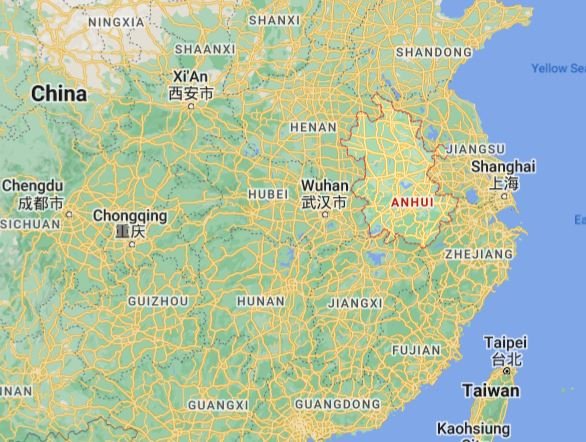What is Qi Men Red Tea?
QI MEN
Also called Keemun
Type: Red (Black tea in the west)
Terroir: An Hui Province
Taste: floral, fruity, sweet
Aroma: fresh and very floral
Qi Men is the only Red tea included on China’s Ten Famous Teas List
If you are a real tea lover, you have to know what is Qi Men tea.
But if you don’t, don’t worry.
I got you covered.
In this article, I will tell you all about this unique Red tea.
By the end of your reading, you will know:
Where and how Qi Men is grown
What it tastes like
How to brew it
Let’s go.
What is Qi Men (Keemun) Red Tea?
Qi Men is a famous Chinese Red tea from An Hui Province that’s known for its beautiful fragrance.
It’s sweet, floral, and rich in taste.
It’s also the only Red tea included on China’s Ten Famous Teas List.
(A prestigious distinction that notes the tea’s importance)
What Does Qi Men Taste Like?
Like all Red teas, Qi Men is floral, fruity, and sweet.
But what makes it more desirable is its prominent (and beautiful) floral fragrance.
Generally speaking, Qi Men is pretty smooth.
It has a fresh, fruity, sweet profile that’s brought together with the floral aroma.
It’s one of the most enjoyable and smooth red teas to drink…
If you’re drinking good quality Qi Men, that is.
(More on that below in the Qi Men Variations section)
Growing Location
Qi Men (Keemun) is from China’s An Hui Province in the east.
Which is also home to two of China’s most famous Green teas:
Mao Feng
And Gua Pian
The lush mountains here are perfect for tea growing.
Within Qi Men county, there are a few top growing locations for Qi Men Red Tea:
Lu Kou
Shan Li
Ping Li
Qi Men Variations
For Qi Men, you’ll usually see different names that usually correlate to the teas shaped, like:
Hong Mao Feng (no formal shape making)
Hong Song Luo (pearled ball shape)
Hong Xiang Luo (spiral shop)
Gong Fu (broken bits)
These differences in shape sometimes make it feel like you’re drinking a totally different tea.
But they’ll all share similar stone fruit tastes and floral aromas.
Just like any Chinese tea, growing location will be the most important factor in taste (and usually overall quality).
So it’s important to remember that growing location is sometimes more or at least equally important as the tea’s processing.
How to Brew Qi Men Hong Cha
All Red tea can be brewed in multiple ways.
Overall, Red tea is quite forgiving.
Meaning it still tastes good even if it’s under or over-brewed.
Red tea can get pretty strong and can get bitter kind of quickly.
So just be aware of that.
Each of these brewing methods will yield slightly different results:
Grandpa Style
The simplest way to brew Red tea is by throwing a sprinkle of loose leaves in a cup, mug, or bowl, then adding water.
Sip after a few minutes, then add more water.
This brewing method is called grandpa style or farmer style and is usually used in Chinese Green tea and White tea regions.
But it also works well for red tea.
This way is super simple and effective.
But it can be annoying to sift the leaves through your tea.
When brewing this way, be sure to leave a little water in the cup between brews and try to keep the leaf under the water.
It may get strong, but adding water dilutes the tea.
Western-Style
Western-style brewing of Qi Men (Keemun) is simple.
This style of brewing uses a small amount of tea leaf and a large amount of water.
The brew can get pretty strong if brewed for a while.
But it won't be as complex as the other brewing methods because of the high water to leaf ratio.
What you need:
Teapot with strainer
2-5 grams of loose leaf red tea
Not needed but recommended:
Scale
Tea timer
To make tea in the Western Style:
Weigh out 2-5 g of tea leaf (more leaf means a stronger tea)
Put Red tea in the teapot.
Fill with boiling water (212F or 100C), 350-700ml (12-24 ounces) depending on the size of your teapot.
Set the tea timer for 3-5 minutes. Pour into your cup.
Rebrew with boiling water for an additional 3-5 minutes.
Brewing with a Gai Wan (the Traditional “Gong Fu” Method)
Brewing any Red tea with a Gaiwan will give you the best results.
It’s important to note that higher-quality Chinese teas are “designed” to be brewed this way.
Meaning you’ll get a lot more flavor, aroma, and body out of the tea brewing this way.
If you’ve never used a gaiwan before, no worries –
It’s basically just a small bowl with a lid that holds the leaves.
It makes sure they don’t fall out when you pour the tea into a cup.
If you’ve never brewed with a Gaiwan before, be sure to check out our guide on How to Brew Tea in a Gaiwan here.
It’ll show you how easy it is.
This method of brewing is also called Gong Fu Cha.
Which means: “Brewing Tea with Skill.”
Here’s how to brew your Qi Men with a Gaiwan:
What you’ll need:
Sharing pitcher (known as Gong Dao Bei)
5 grams of Red tea
A cup to drink the tea
Optional, but good to have:
Tea scale (these teas are measured by weight)
Tea strainer
Brewing Instructions
Weigh out 5 grams of Qi Men and place in Gaiwan.
Rinse the tea with hot water, and discard this first brew.
Fill the Gaiwan with boiling water (212 F or 100C) – roughly 50ml of water for a standard-sized Gaiwan.
Brew for 3-5 seconds and strain.
Repeat to re-brew.
Be sure to use quick steeps with this brewing method.
Or the tea will over-brew and might be undrinkable.You can brew these same leaves about 5-10 times. Just adjust your brew time if the tea is too light or too strong.
History of Qi Men
Qi Men was originally developed in 1875.
After that, it quickly became popular within China and throughout Europe.
And was one of the teas sometimes blended into English Breakfast tea (and still is in some modern-day blends).
Notes: Qi Men is named after the region it comes from in the An Hui province. But when they first started trading Qi Men tea with China, European merchants distorted its name, spelling it Keemun. That’s why you find two different names for the same tea.
Come Join Our Tea Community
If you found this article helpful, grab a cup and join our Ooika community, Steeper Union.
It’s a private Facebook group for fellow tea lovers.
Hope to see you there.
And if you want to learn more about Chinese Red tea, check out our guides covering well-known Red teas such as:





